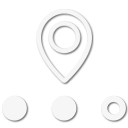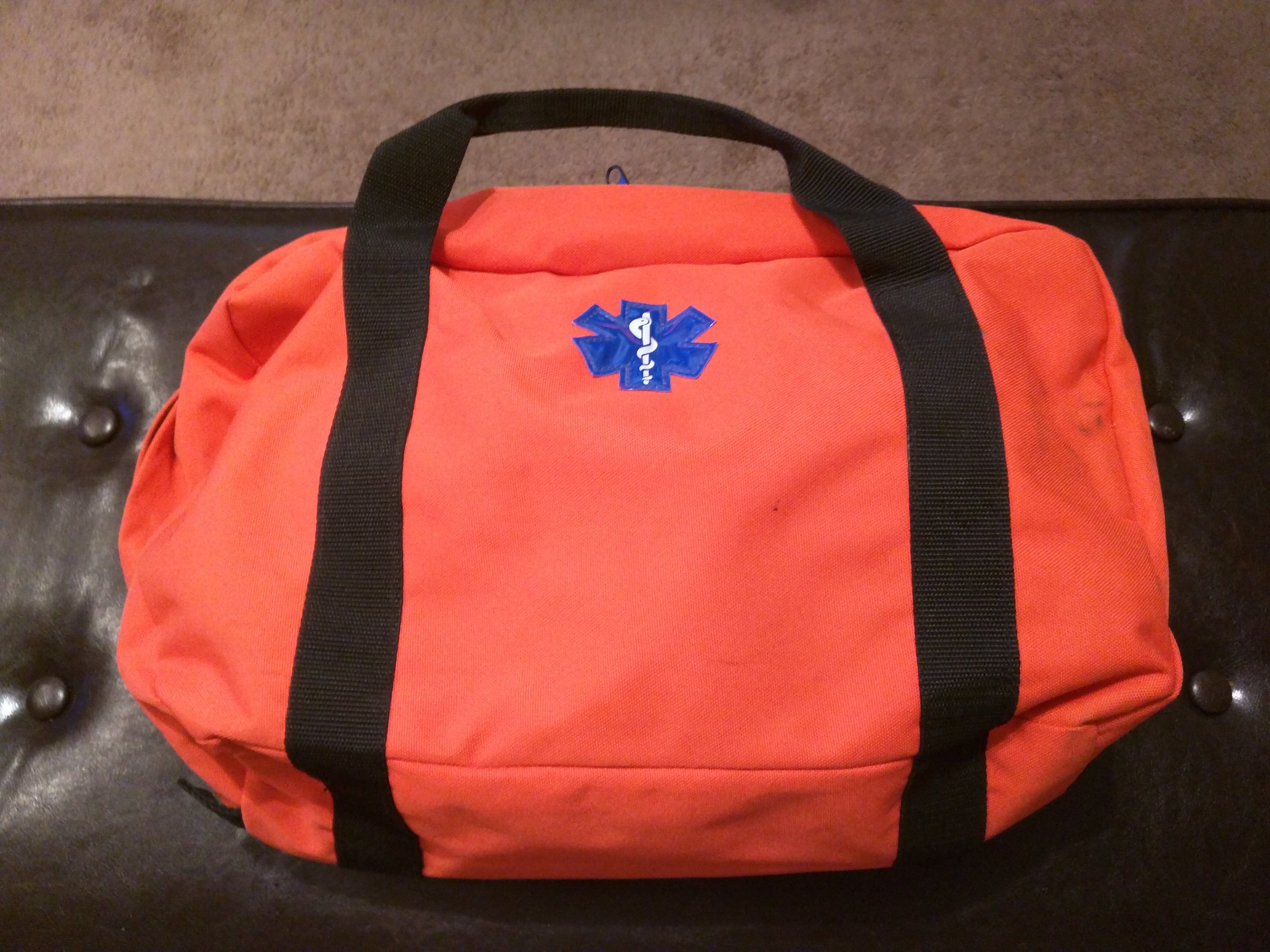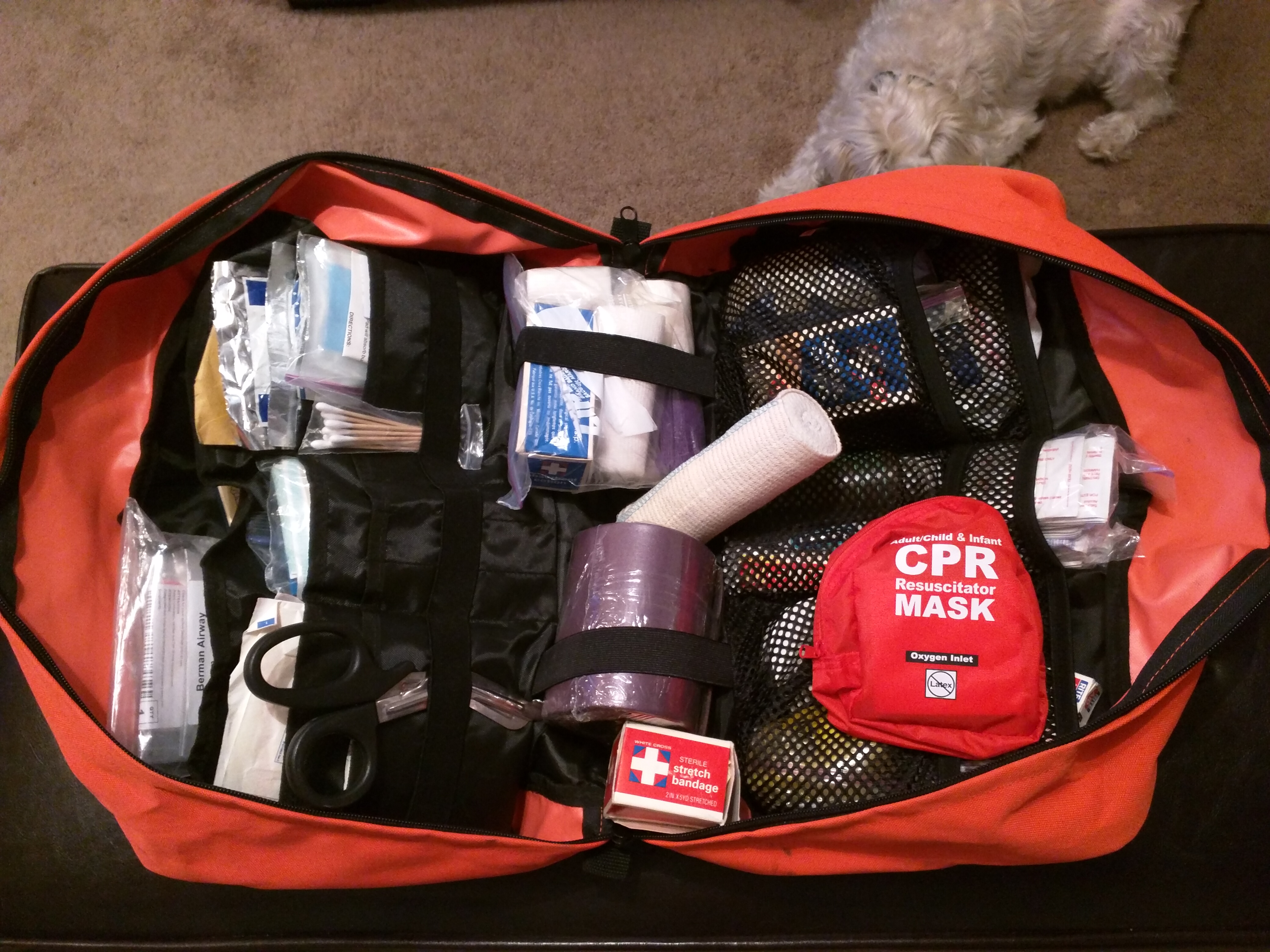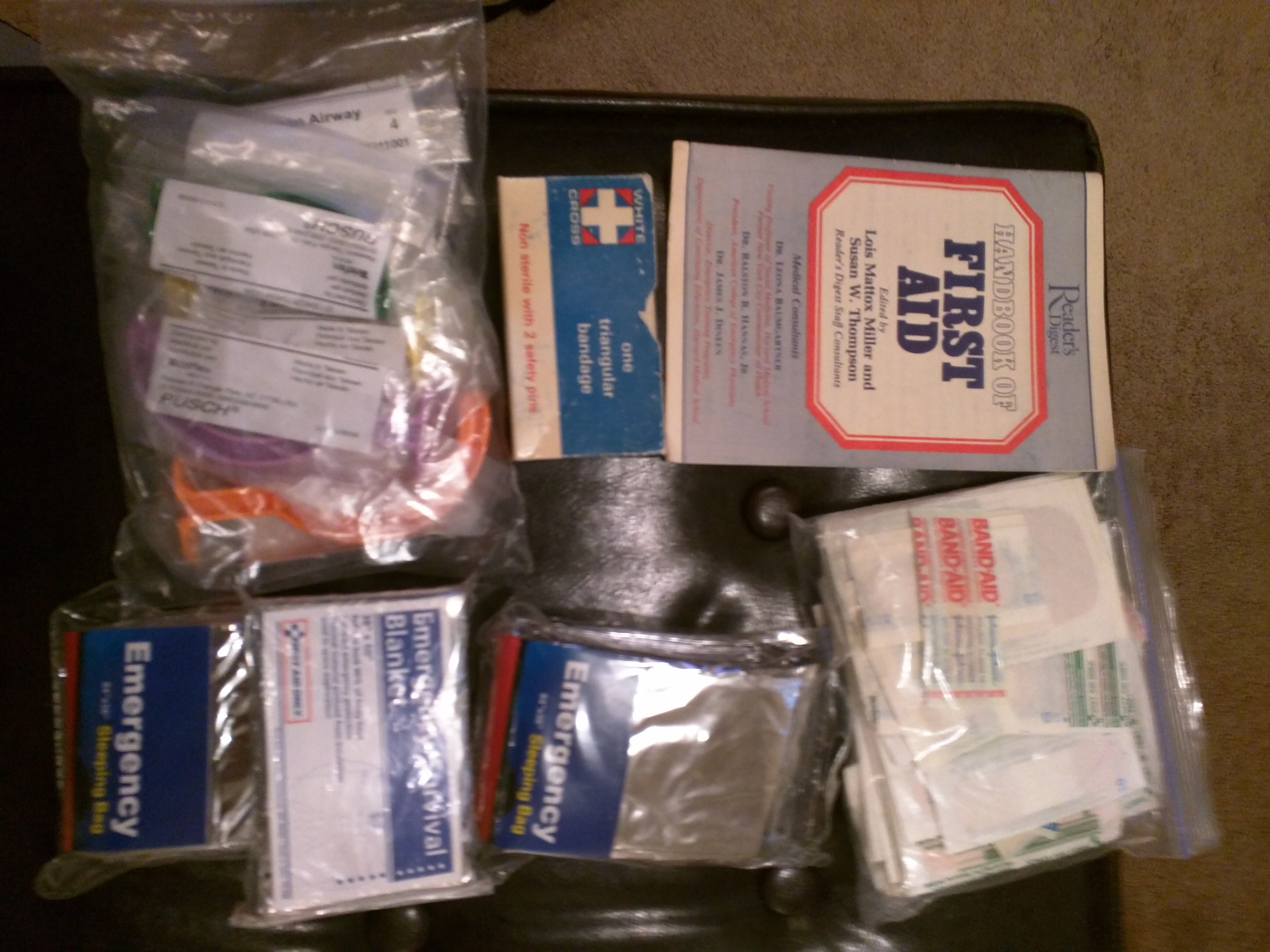I will have to get some photos of my First Aid Kit.
I used to have it packed in an orange bag, but I scored a free Pelican Case with some reloading supplies and moved everything to that box. The soft bag was resulting in some things getting squished that I preferred didn't, like the squeeze bottle of iodine.
I have the typical stuff for trail boo-boos, but I have focused heavily on large wound pads. I have come upon several bad crashes over the years and learned that the small 2x2 pads just are not enough to stop serious leakage. I have added a stack of pads, tourniquet, and even some Israeli field bandages. A large assortment of steri-strips will help keep things closed, since I don't know how to do sutures.
Here is the old bag I used:
What you see when you opened it (This bag will become my home kit, all but a few things from this kit are now in a Pelican Case to keep out dirt, moisture, and keep them from being crushed.)
The bag at the top is all various sizes of wrap; it's the same stuff they use on you when you donate blood or on your pets at the vet. It's very handy for keeping wounds and dressings clean and in place. Next down is an ace bandage, followed by a roll-up splint for broken bones (really hope I never have to use that one). Also pictured are the EMT sheers and CPR mask.
Various general purpose and specialty bandages - including ones for eyes and burn pads that won't stick to the wound.
CPR airways (top left), Emergency blankets to treat for shock (now reduced to one for space, the others are in the get-home bag), manual, and bag-o-bandages.
The snake-bite kit is gone, after reading up on them, I realized they do more harm than good. At the center are surgical gloves; I can't express strongly enough how important these are. After getting covered in someone's blood trying to stop a gushing head wound, I realized that gloves really need to be in every kit. Without running water, it also helps keep your filthy hands from spreading infection to the wound.
Things I need to add to the kit right now are medications: ibuprofen, acetaminophen, Imodium, Pepto bismol caplets, etc. The problem with keeping this stuff in the rig is the winter cold and summer heat break them down more quickly than if they were in a nice, climate-controlled home.
Anyway, I hope that this was helpful. This kit is in addition to the OEM first aid kit that comes with the XTerra. I have added things like bandages and such to it, but it is pretty well stocked with things like tweezers and a small pair of scissors. The tweezers are probably the most used item other than band-aids.
















